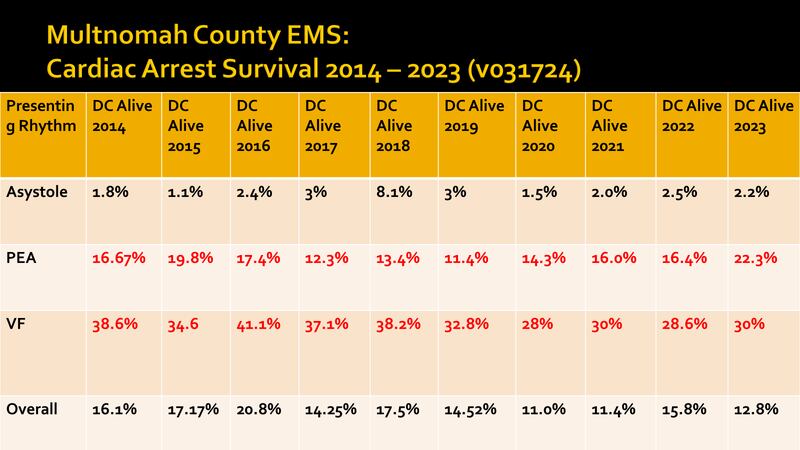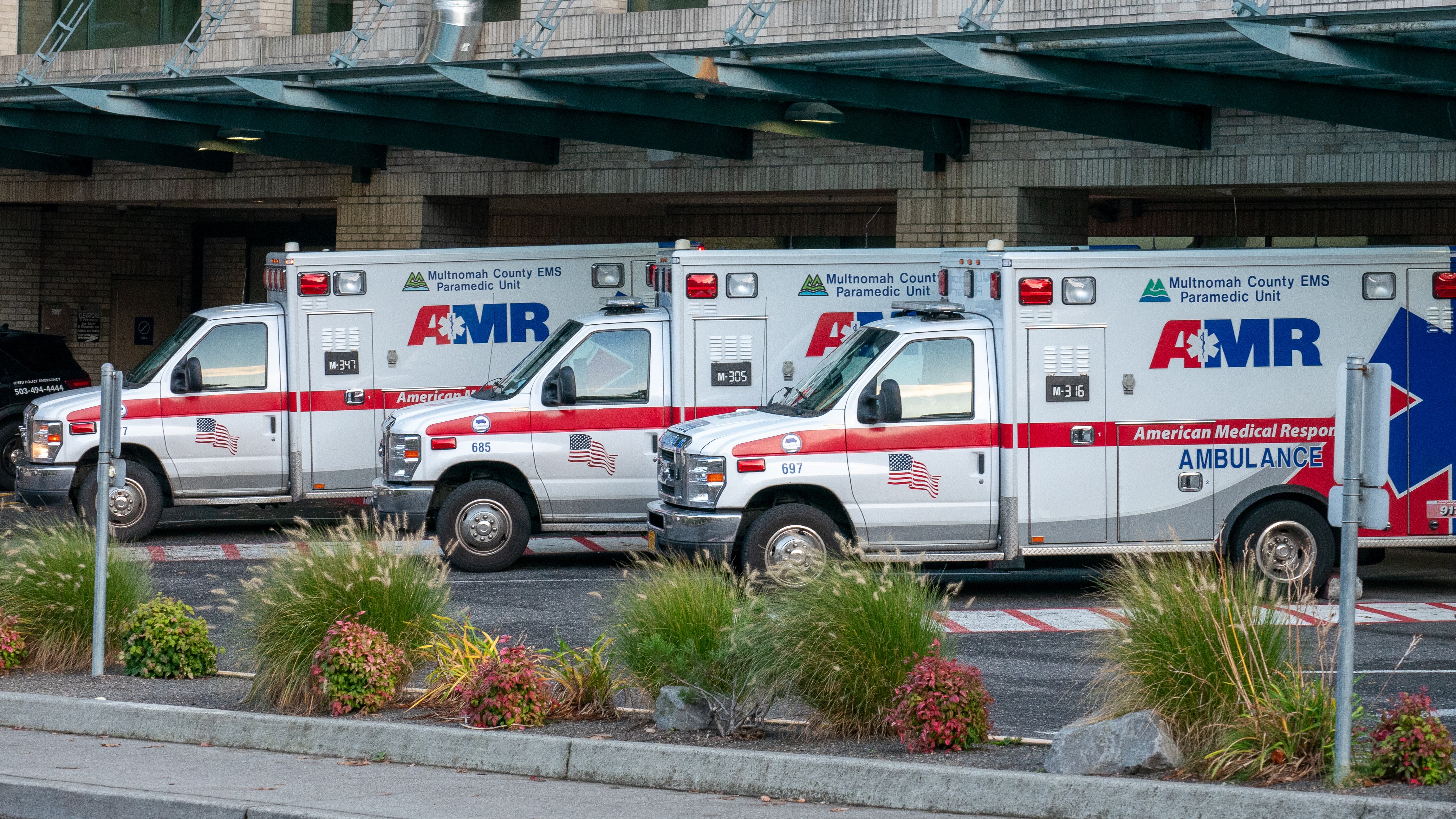New data obtained by WW shows a 19% drop in Multnomah County’s cardiac arrest survival rate last year. That’s a measure of how often people walk out of the hospital alive after a heart malfunction.
The drop raises questions about the quality of the county’s emergency response system, and it comes amid a contentious policy debate over how to address an ambulance staffing crisis—and resulting delays. Researchers have found that jurisdictions with lower cardiac arrest survival rates tend to have slower ambulances.
Here, ambulances are so slow that the county is threatening to fine its provider, American Medical Response, $2 million for failing to live up to its contract. AMR says the problem is out of its control; it can’t run enough ambulances because it can’t find enough paramedics to staff them. The two sides are currently in mediation.
Part of the problem, AMR says, is an unusual county policy that requires nearly all ambulances to be staffed with two paramedics. But the county has long said that the policy saves lives, and it’s pointed to data to prove it. In 2022, 15.8% of cardiac arrest victims walked out of Portland hospitals alive—far above the national average of around 9%.
But the latest data throws some cold water on that argument. The 2023 rate fell 3 percentage points, according to data presented at recent EMS training and obtained by WW today from the county’s health department. That’s a 19% drop in a year.
The new data makes 2022 look like something of an outlier. The rate plummeted to under 11% in 2020 and stayed low in 2021 before rising back up to pre-pandemic levels in 2022. Now, it’s fallen again. (It’s unclear if this reflects a nationwide trend. Cardiac Arrest Registry to Enhance Survival, the organization that tracks these numbers nationally, has yet to publish its 2023 report.)
In a statement released to WW, county EMS director Dr. Jon Jui characterized the drop as a “slight decline” and attributed it to the county’s “large number of overdose deaths, which present with no heart activity” and have almost no chance of survival.
And, he pointed out, not all the data is bad. There was an increase in survival rates for other types of cardiac arrest.
Here’s the data:


